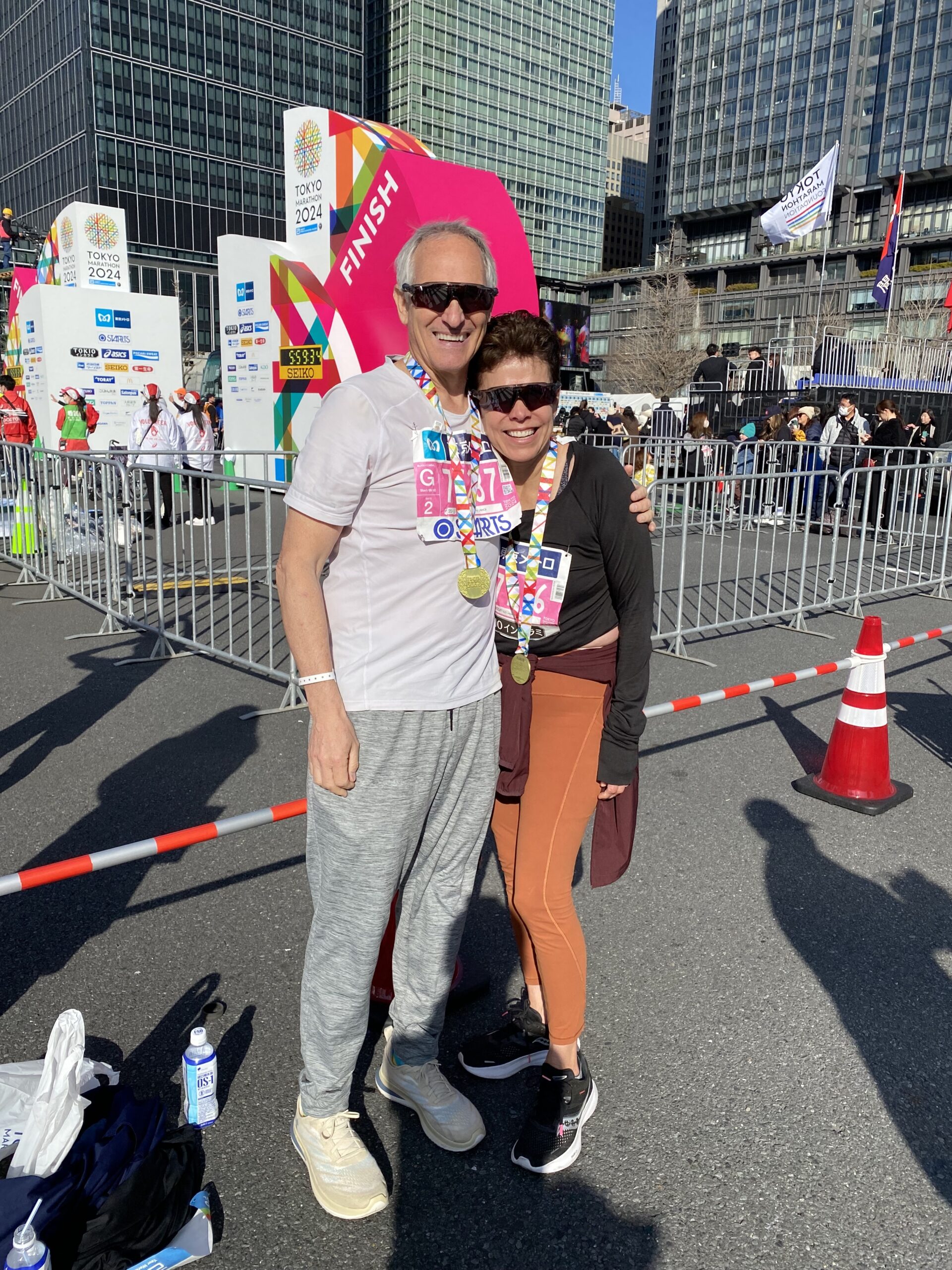May is American Stroke Awareness Month. A stroke takes place when blood vessels that supply oxygen to the brain become blocked or rupture, resulting in damaged brain cells and potentially even permanent brain damage or death. Sadly, stroke continues to be one of the leading causes of death and disability in our country.
Imagine not realizing you were experiencing the signs of a stroke, instead thinking you are just suffering from side effects of exhaustion after running a marathon in another country.
This is what happened to one of our CTVS patients who recently visited Japan to compete in her third marathon.
Meet Alejandra Saitas
60-year-old Alejandra has been an avid runner since 1994, participating in multiple marathons and triathlons.
She and her husband, also an elite runner, traveled to Tokyo in April to run the city’s marathon together.
After crossing the finish line, she later celebrated her accomplishment at dinner with friends. Alejandra began to have trouble with her balance and recalls her stomach felt queasy.
Her initial thought was that her body was just extremely exhausted and dehydrated.
Little did she know that what she was experiencing was the beginning of a stroke.
The next day while walking through the airport before her 13 hour flight home, she was inexplicably bumping into people due to impaired peripheral vision (which she didn’t know at the time was affected). As soon as they landed, Alejandra’s husband immediately suggested they go to the hospital to get her checked out.
A CT scan and other tests confirmed that Alejandra had blood clots in her carotid artery, which is the main artery that supplies blood and oxygen to the brain.
She was referred to a specialist and met with CTVS board-certified vascular surgeon Dr. Jeffrey Apple, who performed a TCAR procedure to prevent the clots from traveling further up towards the brain and causing another stroke.
What is the TCAR procedure?
TCAR stands for transcarotid artery revascularization. This minimally invasive surgery clears blockages from the carotid artery to improve blood flow to the brain and help prevent strokes.
Performed under general anesthesia, the surgeon makes a small incision near the neck and places a specialized tube into the carotid artery to temporarily reverse the blood flow away from the brain. A stent is then placed to secure the plaque in the carotid artery. The blood that is filtered during the procedure is returned to the patient via a large IV in the femoral vein. Upon completion of the procedure the flow-reversal device is removed from the artery and vein.
It has been over a month since her stroke and TCAR surgery, and Alejandra is happy to be running with her husband again.
“I never thought it would happen to me,” she says of her stroke experience.
“I thought I was doing all the right things, exercising, and eating well, but I am proof that this can happen to anyone.”
Her advice to others is to know the symptoms of a stroke, and get help immediately if you, or someone you’re with, are feeling any of these indicators.
What are common signs of a stroke?
Follow this simple BE FAST acronym to recognize stroke symptoms:
- B = Balance: Does the person suddenly have trouble with balance or coordination?
- E = Eye: Is vision suddenly blurred or is there a loss of vision in one or both eyes?
- F = Face Drooping: Does one side of the face droop or does it feel numb? Can the person smile?
- A = Arm Weakness: Is one arm weak or numb? Can both arms be raised, or is one hanging downward?
- S = Speech Difficulties: Is speech slurred?
- T = Time to Call 911: Getting help immediately is essential in preventing permanent brain damage from a stroke. Call 911 as soon as stroke symptoms appear, and note the time when they started, as every minute counts in helping to halt what is happening.
CTVS is grateful that Alejandra has recovered well and thanks her for sharing her story which can also be found in the Austin American Statesman. Our cardiothoracic and vascular experts want to remind everyone to recognize the importance of stroke awareness and taking immediate action and that anyone, no matter how healthy you are, could be susceptible.
For questions about any of our vascular, cardiac, or thoracic services, please visit ctvstexas.com or call us at (512) 459-8753 to schedule an appointment.
Don’t forget to follow us on Facebook and Instagram and check our blog for regular updates.

